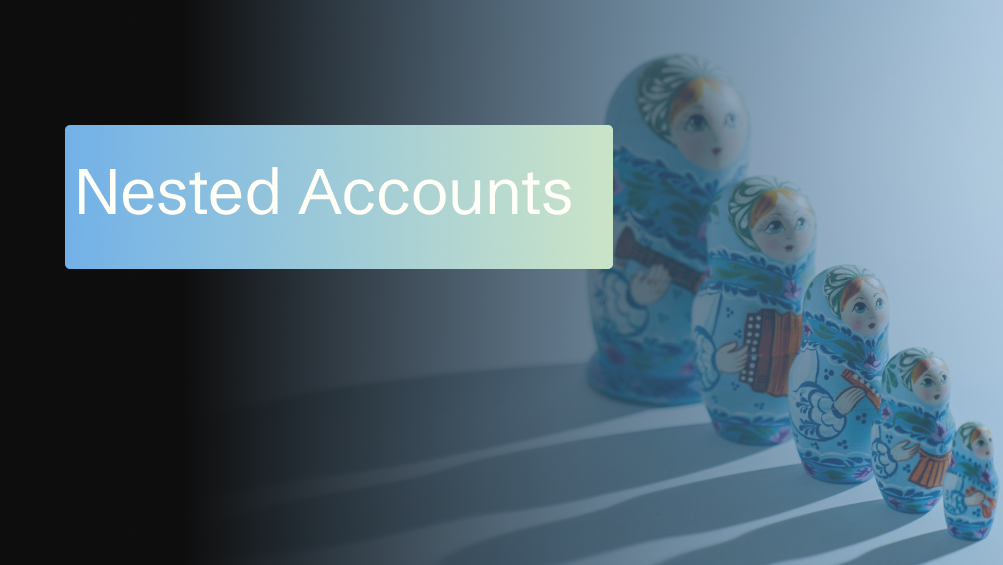

In payments (and in all fintech, really), compliance is the foundation of trust, access, and scalability. Especially in places like the EU and United States, it’s critical that new technology can maintain the rigorous standards of traditional financial systems if it’s going to scale as part of enterprise infrastructure. The easiest way to bring clients and customers along with compliance standards is to help them understand why they’re so important. They’re in place to protect funds, businesses, and consumers, yet every few years you’ll see a new wave of fintechs choose to simplify, side-step, or even willfully misinterpret compliance rules and regulations, and often they’ll end up paying a price (whether literal or metaphorical).
One of those compliance risks that is having a misunderstood moment alongside the boom in cross-border payments technology is the concept of nested accounts. Some payment platforms allow them, some don’t, some haven’t drawn a hard line yet. But if you’re evaluating a payments partner or building on top of payment infrastructure, it’s essential to understand what nesting is, the implications of nested accounts, how it works, and why our team at Rail advises against it — for the continuity of your business and the safety of your customers.
Let’s dive in.
A nested account occurs when a customer of a payment provider uses their account to offer payment services to downstream users (aka a customer uses their account to offer payment services to their clients’ customers). This usually happens without disclosing those users to the original provider or onboarding them through proper channels.
It’s like a payment platform hiding inside another payment platform. Think of Matryoshka dolls — they stack (or nest) one inside another. Or perhaps you’ve taken up pottery like some folks on our Marketing team; think of a set of nesting bowls, perfectly suited to sit one inside the other in a range of sizes. That’s where the terminology for nesting comes from in this case.
The outermost layer (the visible client) obscures one or more undisclosed inner users, creating a lack of visibility for the underlying payment provider or bank.
Nested activity can take a number of forms. Some of the most common ones?
On the surface, this might look like a normal business flow, but behind the scenes, it hides the true source and destination of funds. And obfuscating that information can cause issues when it comes to compliance.
Nested accounts create blind spots in compliance. When your payment provider doesn’t know who’s actually sending or receiving money, it can’t properly assess risk, perform due diligence, or meet regulatory obligations. That puts the provider — and everyone using the platform — at risk.
Specifically, nested accounts can compromise…
And issues with any or all of those areas can lead to loss of original payment services for everyone involved. Things like offboarding from a banking provider, suspended access, and even regulatory shutdowns. For global providers, especially those connected to fiat rails, the risk is too high to not comply.
Some payment platforms seem to allow nested accounts, and while we can’t speak to the decisions of those teams it may be because they operate in limited jurisdictions where compliance standards aren’t as stringent, or because they’ve made an intentional business decision along the way.
Why would a platform allow nesting?
But these shortcuts can come at a cost. When nested activity goes undisclosed, it doesn’t just hurt the bad actor, it puts every client on the platform at risk.
At Rail, we made a deliberate decision for the continuity of our client’s business and the security of their customers: we don’t allow nested accounts. Ever.
We serve businesses building serious infrastructure — embedded finance products, platforms, marketplaces, and global treasury tools. And we know that to support them at scale, we have to do compliance right in order to protect their business, their customers, and every client on our platform.
That means:
Instead of allowing nesting, we built a structured alternative.
If your customers want to serve their own users — whether other businesses, vendors, or end consumers — Rail offers a fully supported Affiliate Program.
The Affiliate Program enables:
It’s designed for real-world growth without the compliance risk. Whether your client is a payout platform, fintech wallet, vendor marketplace, or program manager, we help structure the relationship transparently and securely.
You may be nesting (or approaching it) if:
If you're not sure, that’s okay. Many businesses grow into this complexity before realizing it. The key is to flag it early and structure things correctly.
Businesses that invest in compliance early are better positioned to scale globally, build trust with partners, and withstand regulatory changes. Rail is built for those businesses.
We believe the future of payments requires transparency — and that’s why we’ve drawn a clear line: no nested accounts. Instead, we offer the tools, structure, and guidance to grow the right way.
Get in touch and we’ll walk you through the setup, onboarding process, and use cases we support.
